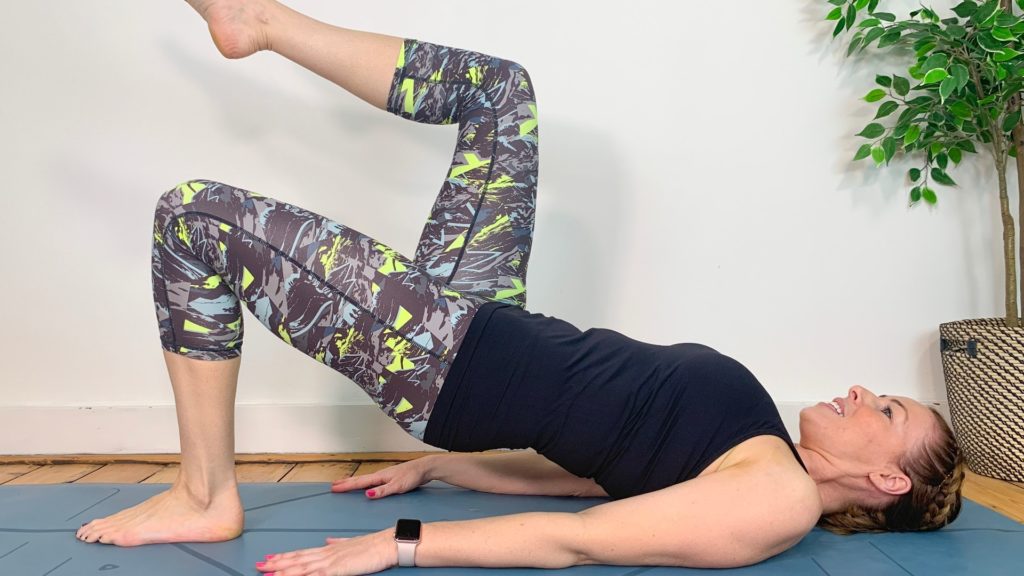How cross training can make you a better cyclist

Cyclists are becoming more well-rounded athletes thanks to cross training. Although often used purely in a gym context, cross-training actually means any type of exercise that you can substitute for cycling. This could mean anything from pumping weights to your daily dog walk; if it helps improve your aerobic fitness, it’s all good. But it isn’t just general fitness that it improves. Mixing up your training can also help condition your core and build endurance and power, all while saving your favourite sport from becoming a chore.
Starting out small
Even if you fancy yourself to be a top-quality cyclist, starting out in a new discipline or new sport entirely will have different and productive effects on your body. By slowly building up these different exercises, while focusing on form and understanding how different muscle groups are activated, will ultimately complement your cycling training, strengthen your body and prevent small injuries. Be careful not to go too hard too soon, especially if you’re getting into something totally new. Start small and build gradually to get the best results. A personal trainer or cycling coach can help manage the workload.
Reducing injury risk
Once you’ve got in the swing of cross-training, you’ll find that it will reduce those annoying low-level, niggling injuries. This is because by moving your body through different motions, for instance with running or swimming, you start to smooth out muscle imbalances. However, you don’t want to risk going completely the other way and incurring stress injuries – balance is key.
Varying disciplines to develop skills
It’s not all about trying out different sports entirely. Some areas of cycling are so far removed and different to road cycling that they can have a huge effect on your capability. One such discipline is cyclocross. The modern world of professional cycling has seen some of its biggest names come from cyclocross. If you’ve been watching cyclocross this season, you will no doubt know about Wout van Aert, Mathieu van der Poel, Tom Pidcock and Marianne Vos already, but the likes of Peter Sagan, Matteo Trentin, Julian Alaphilippe and Pauline Ferrand-Prevot have all got a background in the wet and muddy discipline.
But why is cyclocross breeding such great road riders and how can it do the same for you? Firstly, the aforementioned weather and mud will prepare you for any eventuality on the road, but the answer you’re looking for is this: the two biggest skills improved by cyclocross are power and handling. With lots of speed changes on a typical ’cross course, momentum is key. Don’t be fooled by the race length; an hour’s effort seems easy to a rider used to riding all day but a cyclocross race is comprised of lots of different mini sprints. A race of intervals, this variation of speed will make you a more powerful rider in no time. The difficult conditions, tight courses and tricky terrain will also improve your handling. Over time you will understand your bike better, the art of tyre pressures and judging your limits. Now you can see why Julian Alaphilippe and Peter Sagan make descending look so easy.
Supplementary sports
As well as dabbling in different disciplines, picking up a different sport can have huge benefits on your riding. As previously mentioned, running and hiking can be used to build stronger bones, and they can also improve cardiovascular fitness. When our exercise range is so limited, as is the case under covid-19 restrictions, a good run or long walk can be the perfect alternative to a ride. You need this aerobic strength to take on the toughest of challenges on the bike including big climbs and tricky off-road terrain.
Similarly, swimming is a complete body workout that requires every muscle. This makes it the perfect exercise to complement cycling as it builds strength, stamina and increases lung capacity. According to the latest studies, regular swimming lowers the risk of death due to heart disease by 41%.
Yoga and Pilates
If you cycle regularly without any form of stretching, your glutes, quads and hamstrings will start to feel especially tight. Couple this with the fact that we are staying indoors more than ever and spending long periods of time sitting down, and you have got yourself an injury waiting to happen. Olympic medal winning triathlete Vicky Holland told us recently in an interview how much benefit she got out of yoga.
Yoga and Pilates can significantly reduce this risk. As well as strength and flexibility, they also have positive effects on focus and wellbeing. As well as the obvious physical benefits from controlled stretching, yoga focusses on breathing pattern with exercises that can be utilised within a ride or race scenario. Pilates is a little more intense and focusses mainly on core and posture, two things that are crucial to comfort on the bicycle. Flexibility will be improved in your pelvic, hip and back muscles as well which helps with injuries and on bike form. A comfortable, fit and well stretched rider is a quicker rider.
All Yellow Jersey customers get access to free Pilates sessions from Pilates by Georgia.
Harry, a cyclist from Derbyshire, is a yoga devotee and uses it to supplement his riding. As a result of these exercises, he has seen improvements in his cycling. “The main improvement to my skills is that I have a stronger core, which lets me hold an aero position longer, but also generally reduces my pain on the bike after three plus hours.”
Strength training
Gyms may well be closed right now but there’s no reason you can’t do strength work at home. Setting aside some time to focus on strength training is the most effective injury prevention tool in any sport and has more specific long term ride benefits. What’s more, if you’re doing it right, you needn’t worry about bulking up. As cycling is a low-impact activity, many cyclists find they have low bone density which can result in more pain and injuries. Strength training helps combat this, as well as maintaining form in the saddle for longer, which in turn will make you faster.
Exercises like planks, lunges, leg-lifts and burpees all go a long way to improving a rider’s core strength. For an in depth look at the home exercises that can help with strength work from a professional coach, make sure to check out this British Cycling series.
Anna, a cyclist from Cambridge, has switched full-time to online exercise classes because of lockdown. “The classes involve some really intense cardio circuits and some more low-intensity mobility classes to keep limber.” By the time it came to her first ride in the new year, she felt much stronger. “You don’t necessarily associate kettlebell throws with bike riding, but it makes a difference. I’ve been doing maybe three or four long classes a week for about four weeks when I was not riding outside, and I have seen a big improvement in my cycling.”
What the pros have been up to
The off-season has been a little different for professional cyclists this year for obvious reasons. But one cross-training sport many riders pick up during the winter months is cross-country skiing. The likes of Pascal Ackermann, Edvald Boasson Hagen, and in a regular season, the entire AG2R Citroen Team, all regularly pop their skis on. Skiing, especially cross-country, is proven to have significant benefits to aerobic fitness. It engages similar muscle groups to cycling while being a fun off-season alternative, and with such a focus on knee strength, it reduces the risk of long-term injuries in these areas.
Elsewhere, Giro d’Italia champion Tao Geoghegan Hart took a dip in the West Reservoir Centre in Hackney. As a very competent swimmer, the INEOS Grenadier rider certainly knows the impact swimming has on his cycling. He even swam the English Channel as part of relay team at just 13 years old.
Whatever your discipline and whatever your goals, Yellow Jersey bicycle insurance packages will keep you riding year round.







